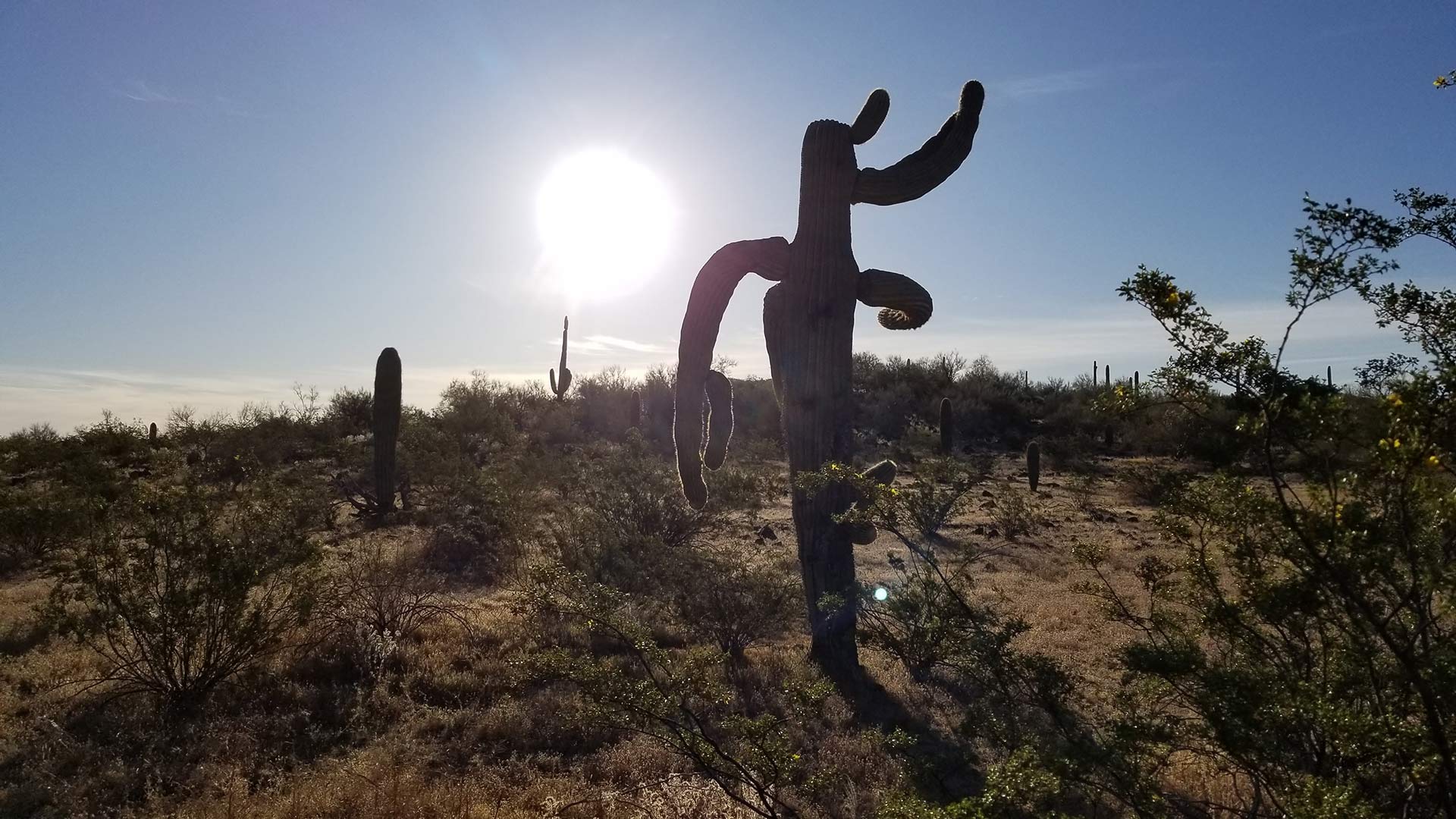 The sun shines harshly behind a saguaro cactus.
The sun shines harshly behind a saguaro cactus.
AC Swedbergh/AZPM
It’s estimated that there are more than 2 million cactuses at Saguaro National Park within the 140-square-mile preserve bracketing Tucson.
The latest count represents a roughly 7% increase from the 2010 saguaro census. But experts are worried about the low number of young saguaros that are cropping up to replace their towering elders.
The region has had a drought cycle that dates to the mid-1990s and the long dry stretch appears to be impacting both reproduction and the survival rate for newly sprouted saguaros.
More study is needed to understand exactly what is happening. In a few parts of the park, no new saguaros have been spotted for the past 25 years. But in others, biologists have found more young saguaros than expected.
MORE:

By submitting your comments, you hereby give AZPM the right to post your comments and potentially use them in any other form of media operated by this institution.